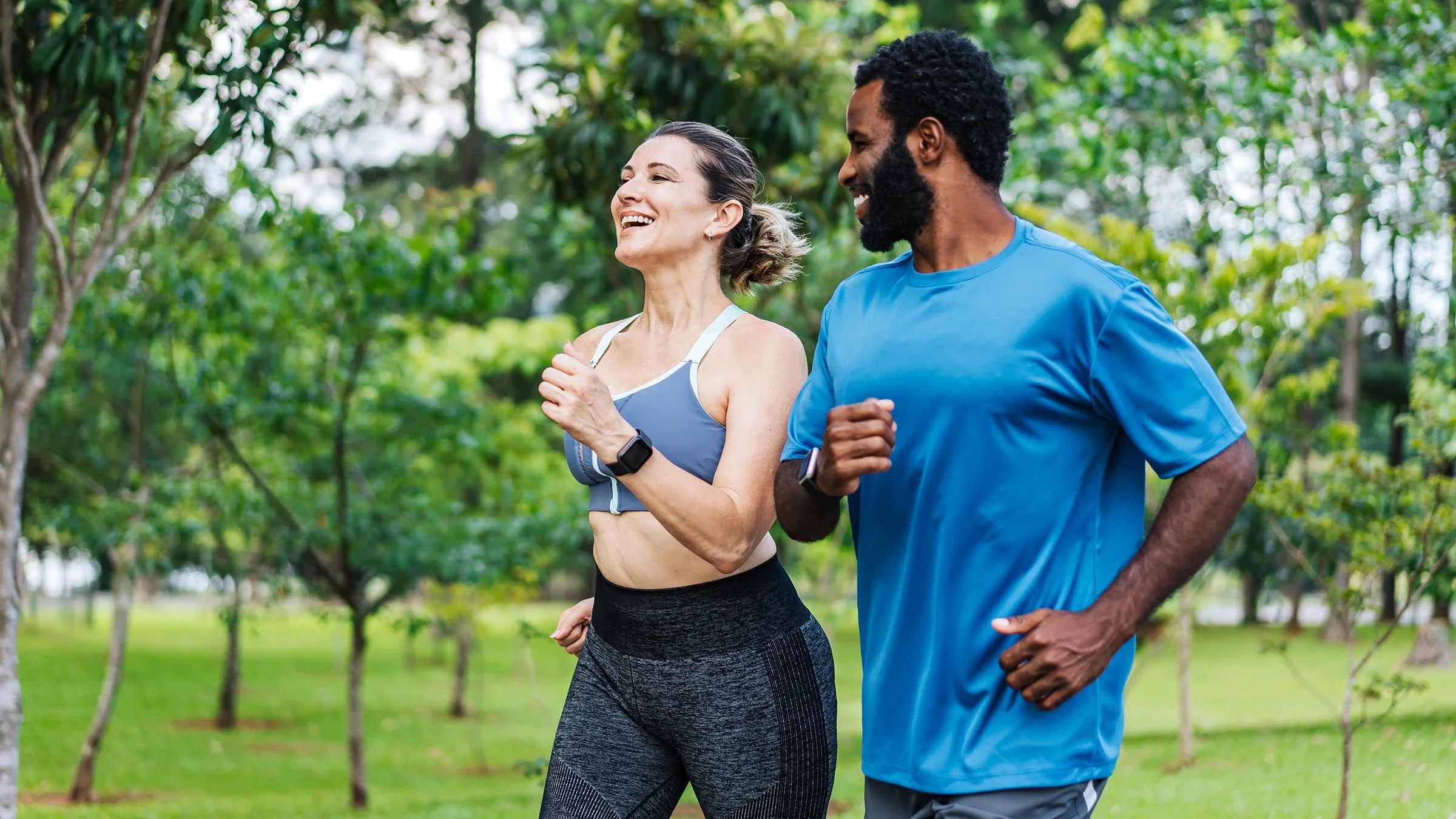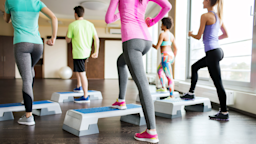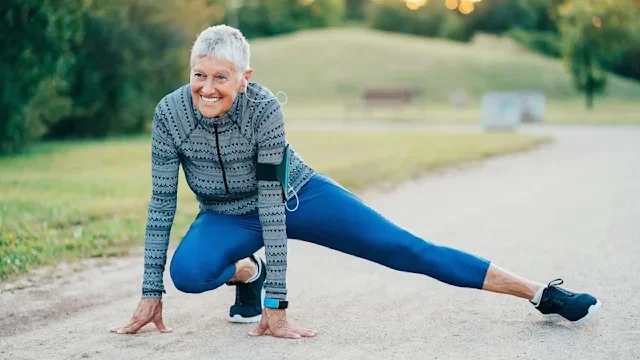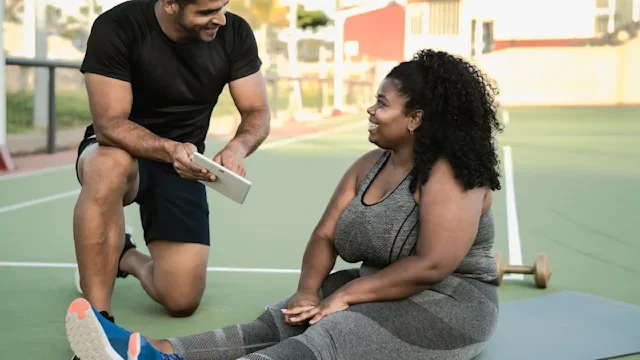Key takeaways:
Running can be an accessible and inexpensive exercise. It offers numerous benefits, from stronger muscles to a better mood.
Helpful tips –– such as practicing your form and wearing supportive shoes –– can help beginners learn how to start running.
Getting adequate rest and recovery is essential for an effective training plan.
Running is one of the most accessible forms of exercise you can do. All you need is a decent pair of running shoes and helpful strategies to get started. As soon as your feet hit the pavement, trail, or treadmill, you can reap the benefits, including better heart health, stronger bones and muscles, and improved mood. These expert tips can help you get off on the right foot.
Tips to get started running
Everyone knows how to run — just put one foot in front of the other, right? It seems easy enough. But running is a little more involved than that. And even though it can be accessible, it can also be challenging to start as a beginner.
Running is more intense than walking or jogging. It puts more stress on the body, making it easier to get hurt if you do too much too soon or don't have the proper technique. So, while it's tempting to pound the pavement right away, keep these running tips in mind before you start.
Search and compare options
1. Get your healthcare provider's OK
If you're active and you don't have any underlying health conditions, you can lace up your sneakers and get started. But if you've been inactive for a while or have any health conditions, it's a good idea to check with your healthcare provider about your plans to start running.
And if you have doubts about whether running is OK, it's better to be safe than sorry.
2. Grab the right gear
One of the reasons running is so popular is because you really don't need any equipment besides footwear to get started. “It's easy to get overwhelmed by the watches and gels and socks, but the only gear that truly matters on day one are your running shoes,” certified running coach Amanda Brooks told GoodRx Health.
However, choosing the right running shoe can be confusing if you don't know what you're looking for. Brooks recommends a neutral, moderately cushioned shoe. "This is going to ensure that your legs and feet get enough support and cushion as your body adapts to the impact of running."
Focus on shoe style, fit, and comfort, and try lots of options. If you need help, head to your nearest specialty running store and ask for expert advice. Stores may have treadmills for you to test out shoes. Experienced salespeople may also be able to observe your form and help you pick the correct shoe.
3. Warm up first
Warming up before exercise encourages blood flow to the muscles and increases muscle temperature. This can improve performance and reduce the risk of injury.
Read more like this
Explore these related articles, suggested for readers like you.
"Beginners should warm up with light dynamic stretches, like leg swings, walking lunges, and arm circles, followed by a brisk 5- to 10-minute walk or slow jog to increase blood flow and prepare the muscles for running," run coach Meghan Kennihan told GoodRx Health.
Static stretches –– where you hold a stretch for a brief period –– are better after a workout. "Do not do static stretching [before your run] –– that is asking your muscles to relax then jumping into a run," Kennihan says.
4. Focus on your form
It might seem like proper running form should come naturally. But it's a little more complex than that. The right posture, foot strike, breathing, and more contribute to your running performance and reduce your risk of injury.
"Focus on maintaining good posture, looking ahead, and landing midfoot and right underneath your body to avoid excessive strain," said Kennihan. "Keep your arms relaxed and bent at 90 degrees, and maintain a steady, controlled breathing rhythm."
However, when you're just starting out, don't get so wrapped up in your form that you can't enjoy moving your body. New runners should "think about doing some running form drills prior to the run, and then worry less during the run," said Brooks. "It's very easy to get so focused on trying to do all the right things during the run that we shoot up our heart rate and stress ourselves out."
5. Try the run-walk method
Running endurance takes time to build. Most beginners can't sustain a running pace for very long, which can be frustrating and make you want to quit. But there's no rule that you have to run the whole time when you're a newcomer.
"The run-walk method is one of the best ways to get into running," Brooks said. This strategy uses high-intensity interval training to alternate between periods of running and walking. "It provides a structured method for increasing your endurance and reduces the intensity, which can be discouraging as a new runner," said Brooks.
Your run-walk ratio will depend on your fitness level. Brooks recommends starting with a 1:1 ratio, such as 1-minute running and 1-minute walking intervals, and adjusting it from there. You can increase running and decrease walking intervals if you don't feel winded while running. Eventually, if it's your goal, you can cut walking intervals altogether.
6. Strength train
Strength training is an important part of any fitness plan. And it may improve your running performance and reduce your chances of injury. Your strength training doesn’t have to be anything complicated, and you don’t even need a gym or weights in the beginning — just your own bodyweight.
Kennihan recommends doing bodyweight squats, lunges, planks, and push-ups. “Aim for two to three sessions per week, gradually increasing intensity and adding weights as you progress,” she says.
7. Find a training plan
Having a plan helps structure your workouts and keeps you accountable and motivated. A good beginner training plan includes running, strength training, and recovery.
“For new runners, I recommend only running every other day and on the off days spending time strength training,” said Brooks. “Most new runners neglect strength work, which is actually a foundational component to endurance, speed, and injury prevention.”
A sample week beginner training plan might look like this:
Monday: Rest
Tuesday: 30-minute run-walk
Wednesday: Full body strength training
Thursday: 30-minute run-walk
Friday: Rest
Saturday: 30- to 45-minute run-walk
Sunday: Full body strength + cardio cross-training (such as cycling)
Don’t worry if you can’t fit all of this in your schedule at the beginning. Set realistic, achievable goals for your lifestyle, and adjust them as your training plan progresses.
8. Don't forget to cool down and rest
A brief cooldown after your run can help bring your body back to its resting state and kick-start the recovery process. Finish out your run with 5 minutes at a slower pace to allow your body temperature and heart rate to gradually return to normal. Then do some static stretches, such as a kneeling lunge, standing quad stretch, and a calf stretch. Hold each for 30 seconds and breathe deeply.
Rest between runs is also crucial to allow your muscles to recover. Inadequate recovery can lead to poor performance and injury. That’s why it’s important to take rest days each week.
“The two most important pieces of recovery are nutrition and sleep,” said Brooks. “Runners have to pay attention to hydration and eating well to allow the body to repair from the workout, plus have the energy to go again the next day. Meanwhile sleep is the ultimate recovery tool and the one that folks tend to skimp on most.”
What are the benefits of running?
You might begin to experience the benefits of running from the very beginning, or it might take a little time. Hanging in there can be worth it. Research has shown that running:
Improves mood: Running encourages the release of brain chemicals called endorphins that help you feel calm and positive. Exercise also increases levels of mood-boosting serotonin and dopamine.
Aids weight management: Running burns a lot of calories. If you’re trying to lose weight, regular running can make it easier to achieve a calorie deficit.
Boosts heart health: Running is proven to reduce the risk of heart disease. One study showed that regular running over a 6-year period reduced risk of death from heart disease or stroke by 50%.
Improves muscle strength: Running works all the major muscle groups in your lower body as well as your core. Increased muscle strength makes daily activities easier and can reduce your risk of injury.
Builds bone density: Weight-bearing exercises like running stimulate the growth of new bone, making bones stronger. This can prevent fractures as well as age-related musculoskeletal diseases like osteoporosis.
The bottom line
Running is an easy exercise to do because it doesn’t require a gym membership, classes, or equipment. It also offers many benefits for your mental and physical health. Beginners should start out slow, focus on their form, and be sure to include plenty of time for rest and recovery when they’re first getting started. This will prevent injury and help you enjoy learning how to run.

Why trust our experts?



References
American College of Cardiology. (2014). Running reduces risk of death regardless of duration, speed.
Basso, J. C., et al. (2017). The effects of acute exercise on mood, cognition, neurophysiology, and neurochemical pathways: A review. Brain Plasticity.
Blagrove, R. C., et al. (2017). Effects of strength training on the physiological determinants of middle- and long-distance running performance: A systematic review. Sports Medicine.
Lee, J. H. (2019). The effect of long-distance running on bone strength and bone biochemical markers. Journal of Exercise Rehabilitation.
Park, H. K., et al. (2018). The effect of warm-ups with stretching on the isokinetic moments of collegiate men. Journal of Exercise Rehabilitation.















